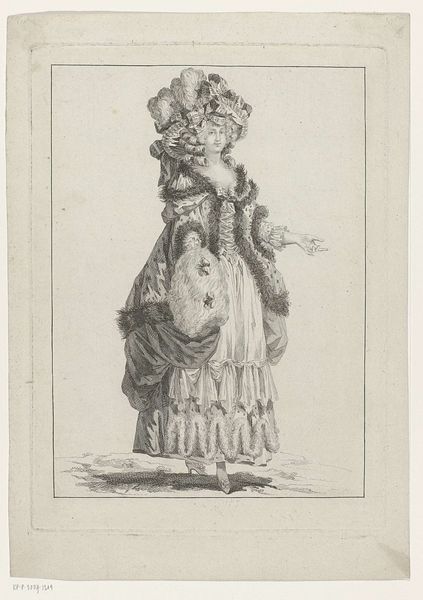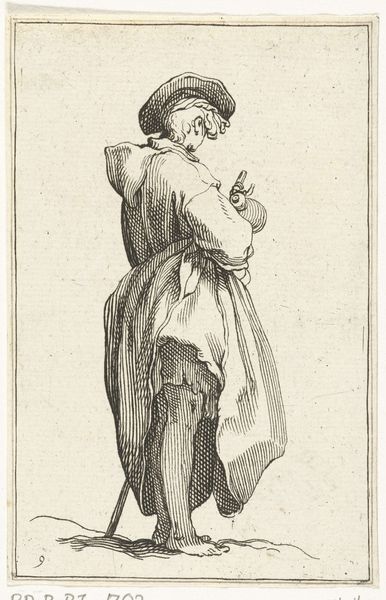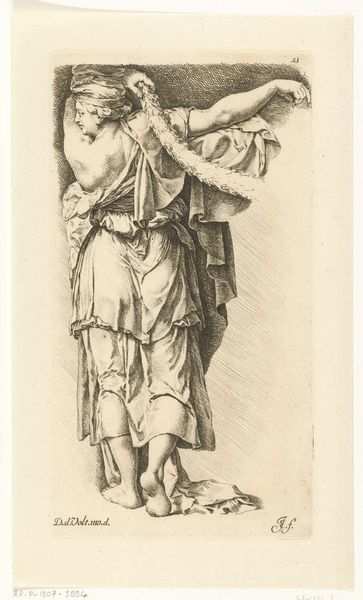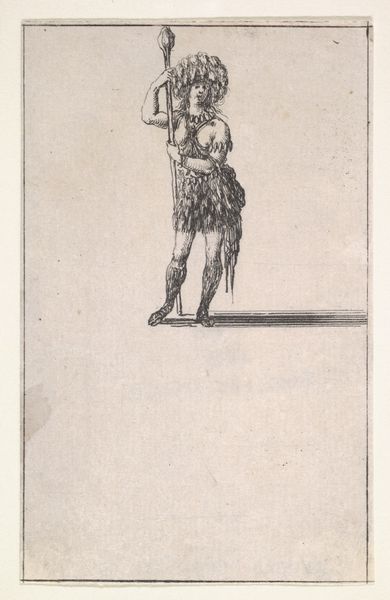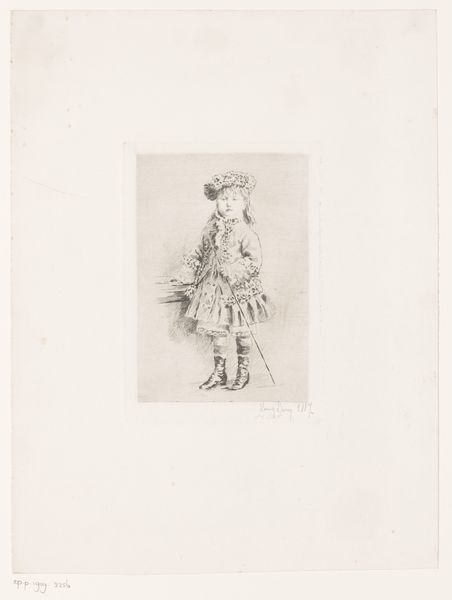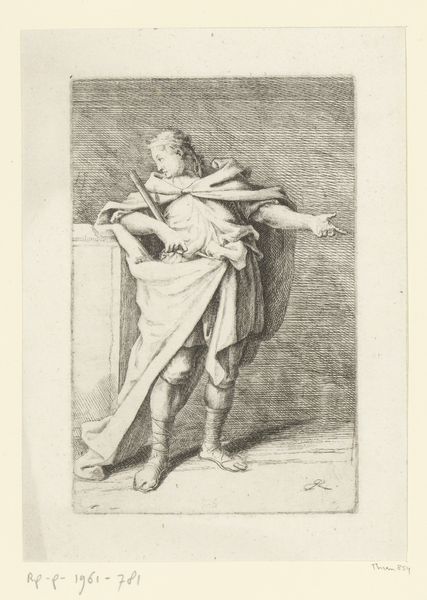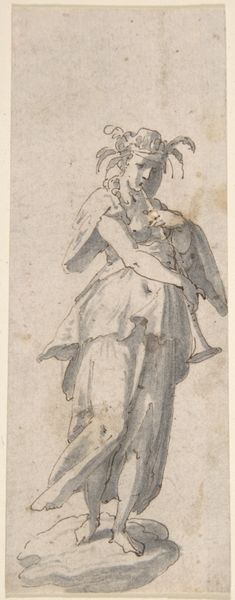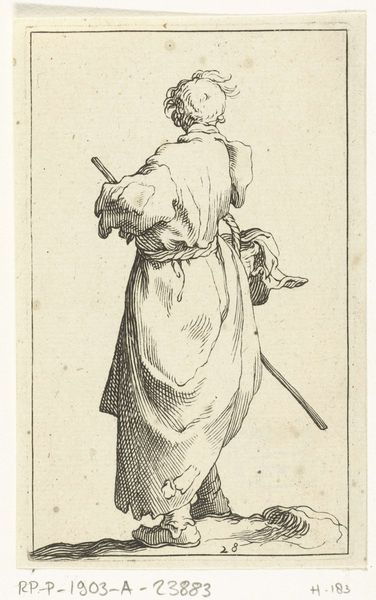
drawing, pencil, pen, engraving
#
portrait
#
drawing
#
caricature
#
pencil sketch
#
ink drawing experimentation
#
pen-ink sketch
#
pencil
#
15_18th-century
#
pen
#
engraving
Dimensions: height 181 mm, width 124 mm
Copyright: Rijks Museum: Open Domain
Curator: Here we have Matthew Darly’s “Lady Drudger," an engraving from 1772. Darly was known for his satirical prints, often skewering the social and political figures of his time. Editor: It's quite striking, even at first glance. There's an odd, almost grotesque quality to the figure. Her face is so exaggerated, and that enormous wig she carries looks like another head, severed perhaps. Curator: Precisely! The exaggerated features are characteristic of caricature, a popular form of social commentary in the 18th century. Darly used it to critique the excesses and absurdities of the upper classes. Notice the weight attached to her ankle. It is inscribed “Georgy to Ranelagh”. Editor: Interesting! So, is that Ranelagh Gardens, a popular spot at the time? The weight symbolizing… perhaps an anchor or burden related to that pleasure ground? What is the wig saying to you, visually? To me, it reflects a kind of artificiality. Curator: Good eye. Ranelagh Gardens were a fashionable gathering place, but also a site of social display and sometimes scandalous behavior. "Lady Drudger," burdened by her ties, satirizes the superficiality of high society. As for the wig: Absolutely, a symbol of artificiality. It speaks volumes about the performative nature of identity during that era. Fashion as mask, literally. Editor: The "mask" even seems to have a downturned expression on it’s ‘face.’ And her own tiny head peeks out so sharply between an elaborate bow and a powdered updo, suggesting the literal burden on her person, or on women of that time. Curator: That’s well-observed! This print reflects the turbulent political and social environment in late 18th-century Britain and even points to some hypocrisy in its values. This makes it a pretty powerful piece of social commentary, still resonant today. Editor: Yes, even without knowing all the specifics of Georgian England, there’s a recognizable human truth captured here. Something about societal pressures, expectations of wealth, the absurdity of some status symbols... It really lingers in the mind, this Drudger. Curator: Absolutely. And that is the beauty of Darly's work; the combination of the social context, cultural symbolism, and satirical visuals offers something lasting, and perhaps timeless.
Comments
No comments
Be the first to comment and join the conversation on the ultimate creative platform.
